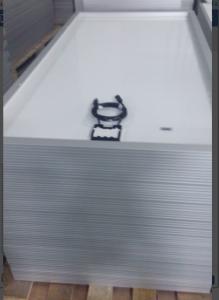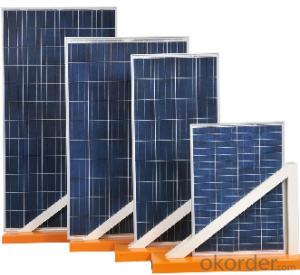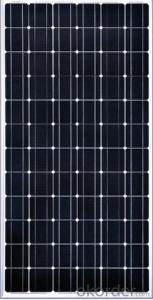Mono 200W Solar Photovoltaic Panel CE TUV UL CERTIFICATE
- Loading Port:
- Shekou
- Payment Terms:
- TT OR LC
- Min Order Qty:
- 3000 watt
- Supply Capability:
- 50000 watt/month
OKorder Service Pledge
OKorder Financial Service
You Might Also Like
Introduction
Mono 200W Solar Photovoltaic Panel CE TUV UL CERTIFICATE,this is a huge kit for industry area and business field. this product is a higer output version with stable power and we gurantee you for 10years. 90%output gurantee 10years 80% output gurantee 20 years.
suggestied application
home lighting business lighting,
Garden lighting, pavement lighting
Farmer household lighting
Decorative water pump
Traffic signal lighting
Solar Power Plant, Solar House
Product features
190W~210W output under standard conditions
Output Voltage 24V. Serial connection of 3 units is suitable for 48V power system
Can fully charge up a 12V 7.2AH battery within 4~6 hours
Poly-crystallize Solar Cells from Taiwan or Germany
Product life over 25 years
Resistance to fluctuations of temperature, humidity and strong wind
Manufactured under IEC61215 Solar Photovoltaic Panel requirements
packing
Individual carton box for solar panel
2 solar modules in a carton
A carton board separates two solar panel
For LCL goods, we use bulk carton box or wooden boxes
Parameters


- Q: I mean like bread is made of wheat, what are solar panels made up of?How are they manufactured?
- Solar panels (aka photovoltaic panel) are most often made up of thin wafers of crystalline silicon or cadmium telluride. As photons from the sun enter the photovoltaic cell, electrons are freed from the substrate when are then collected by wires that run throughout the panel. And as we know electrons=electricity!
- Q: Is it really necessary to make solar panels that expensive?
- Making okorder /
- Q: Can solar panels be used for powering outdoor lighting?
- Yes, solar panels can be used to power outdoor lighting. Solar panels convert sunlight into electricity, which can be stored in batteries and used to power outdoor lights during nighttime. This allows for cost-effective and environmentally friendly outdoor lighting solutions.
- Q: They have been around long enough to be cheaper. Unless they are made out of a natural material that is rare and hard to find, there is no reason why they should be so expensive. On another note, I think that all low power devices like cell phones and even laptops should have solar panels. Even if it is not enough to fully power the device for a long period of time, it will provide some electricity savings and with millions of people saving a little power adds up.
- Because most solar cells are made from silicon crystals that is grown very slowly. Growing silicon crystals from pure silicon is an extremely slow and expensive process.
- Q: Can solar panels be used in areas with high levels of shade?
- Solar panels can still be used in areas with high levels of shade, but their efficiency and energy production may be significantly reduced.
- Q: Can someone tell me if I can run a air conditioner off solar panel?I have a ET-P65420 20Wp solar panel. What do I need to make it work? I am told I will need a Enphase Energy Microinverter M20. Is that true? I am looking to run a 5000 to 8000btu air conditioner to a max of 0000btu air conditioner. I need to cool a 0x30 space. One time I read, I need total watts of panel to match total watts of air conditioner. Then I read, that I do not and can run more watts then what the panel is depending on the inverter and batteries.Can someone tell me what and how to make this work please? More panes or inverter and batteries?
- You can expect such an air conditioner to use something like 500 - 800 watts of power. The ET-P65420 20Wp solar panel produces at most 20 watts so you will need at least three of them. Since solar cells make DC (Direct Current) electricity, and air conditioners use Alternating Current (AC) electricity, you do need an inverter. The M20 is a 220 volt inverter, and I suspect you are looking at a window air conditioner that will probably use 0 volt power. And the M20 only puts out a maximum of 240 watts so you need one for each of the 3 or more solar panels you will have to use. So the first thing to do is shop for air conditioners, getting the most energy efficient model you can find, paying close attention to the voltage and wattage ratings in the owner's manual or on the UL label on the back. Say it is a 500 watt, 0V unit. You will need three solar panels and three 0 volt model inverters. Also note that the 20 watt rating of the solar panels if when the panel is facing DIRECTLY at the Sun. If you just lay them on the roof, then even if the roof is sloped at a good angle (30 degrees) and facing south, it will only produce the maximum power around noon. 4 hours before noon, unless to go up there and tip them up to face the morning Sun they will probably produce only about half that amount of power. So right there you either need a motorized mount to automatically follow the Sun or twice as many panels. However, if you are going to connect the solar panel(s) into the house power, so that it(they) merely supplement the power company power, then you can use any amount of panels, and the power company will supply whatever extra power you need. That requires a licensed electrician to do. Or if you want to just power the air conditioner directly from the solar panels without any interconnection to the house power, then you need to know a lot more about electricity that you appear to know.
- Q: Can u guys help on how solar panels work and how it generates electricity?(or u can give me a good website that has solar panel info on it)~Thanks in advance!~
- Solar okorder under products that are sorted by watts per area. Also go to wikipedia to get more detailed information on solar cells.
- Q: Can solar panels be installed on agricultural or farming operations?
- Yes, solar panels can be installed on agricultural or farming operations. In fact, many farmers and agricultural businesses are increasingly adopting solar energy as a sustainable and cost-effective solution to power their operations. Solar panels can be mounted on rooftops, open land, or even on barns and sheds, providing clean and renewable energy to offset electricity costs and reduce carbon emissions. Additionally, solar panels can help farmers take advantage of unused or underutilized land, providing dual benefits of energy generation and agricultural productivity.
- Q: Can solar panels be used to power a camping trip?
- Yes, solar panels can be used to power a camping trip. They are an excellent source of clean and renewable energy, allowing campers to charge their electronic devices, power lights, refrigerators, and other camping equipment. Solar panels are portable and can be easily set up in a sunny location to harness the sun's energy during the day and store it in batteries for use at night. They provide a sustainable and eco-friendly solution for powering camping adventures.
- Q: Can solar panels be used for charging electric vehicles?
- Yes, solar panels can be used for charging electric vehicles. Solar panels convert sunlight into usable electricity, which can then be used to charge the battery of an electric vehicle. This enables vehicles to be charged with clean, renewable energy, reducing both emissions and dependence on fossil fuels.
Send your message to us
Mono 200W Solar Photovoltaic Panel CE TUV UL CERTIFICATE
- Loading Port:
- Shekou
- Payment Terms:
- TT OR LC
- Min Order Qty:
- 3000 watt
- Supply Capability:
- 50000 watt/month
OKorder Service Pledge
OKorder Financial Service
Similar products
Hot products
Hot Searches
Related keywords


























